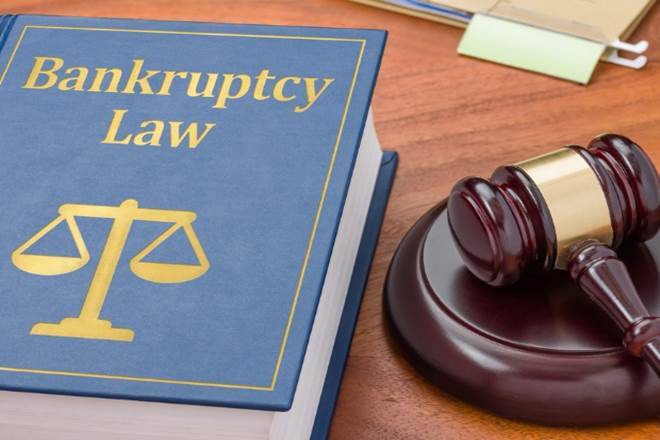
INTRODUCTION
With the formation of the Insolvency and Bankruptcy Code of 2016, the analysis of the subordinate and inter creditor agreements under this Code has been a very debatable topic and it has elevated critical controversies in both Corporate Liquidation Process (CLP) and Corporate Insolvency Resolution Process (CIRP) over the years.
SECURED CREDITOR
According to Section 3(30) of the Insolvency and Bankruptcy Code a secured creditor is defined as a creditor in favour of whom the security interest is created.
SECURITY INTEREST
According to Section 3(31) of the Insolvency and Bankruptcy Code security interest is defined as a right or title or interest or a claim to a property which is formed in favour of, or provided for a secured creditor by means of transaction which guarantees payment or performance of a responsibility and involves mortgage, assignment, charge and encumbrance or any other arrangement or agreement guaranteeing payment or performance of any responsibility of any individual.
CLARIFICATION IN CONTEXT OF CORPORATE INSOLVENCY RESOLUTION PROCESS (CIRP) ONLY
An elucidation on differential analysis of the secured creditors was introduced by the government in 2019, which was established on the priority of charge and however it was solely within the context of CIRP. The elucidation administered that ‘priority’ of security interest of a secured creditor is also thought as an element by the board of creditors, whereas authorising allocation of resolution revenues projected under a resolution scheme. As a result, a primary charge holder may with validity be bestowed supremacy within the allotment of resolution revenues by a resolution applicant.
AMBIGUITY REMAINED IN CONTEXT OF LIQUIDATION
The inquest on whether or not the senior secured creditors would have any sort of command over the subordinate holders in charge, was ambiguous within the context of allocation of liquidation yield in the Corporate Liquidation Process. Under Section 53 of the Code, the liquidation waterfall administers that each one of the secured creditors will be rewarded in magnitude to their concede claims however it does not produce any difference between the secured creditors based on subordinate or inter creditor agreements.
In its 2018 Report, The Insolvency Law Committee alluded to knowledge of this matter and decided that valid subordination and inter creditor provisions are needed to be valued in the liquidation waterfall under Section 53 of the Insolvency and Bankruptcy Code. The Insolvency and Bankruptcy Board of India however, referred to the 2018 Report in its 2019 Discussion Paper on Corporate Liquidation Process and noticed that there was still a debate on whether or not a senior secured creditor has more rights than a junior creditor in the liquidation waterfall under Section 53 of the Code.
In the 2020 Report, this agitation was inscribed by the Insolvency Law Committee once again, whereby it suggested that an explanation must be provided by including a clarification under Section 53(2) to advocate the efficacy of subordinate and inter creditor agreements.
The above-mentioned suggestion of the Insolvency Law Committee was however not approved by the government authorities and no modifications in this context was brought in, in the Code in 2020. Contrarily, based on the Insolvency Law Committee’s perspective in the 2018 Report and 2020 Report, many liquidators and NCLTs started acquiring the position that subordinate and inter creditor agreements between secured creditors shall be acknowledged and given outcome to. Thereby, permitting a discriminatory approach towards the senior secured creditors within the allocation of liquidation yield below the liquidation waterfall.
Finally, the inquest of the efficacy of subordinate and inter creditor agreements in Corporate Liquidation Process was established before the NCLAT in regard to the Technology Development Board vs Anil Goel (TDB JUDGEMENT).
The NCLAT during this judgement has not agreed with the explanation of the Insolvency Law Committee and implemented transparency on the matter.
NATIONAL COMPANY LAW APPELLATE TRIBUNAL (NCLAT) JUDGEMENT
The NCLAT within the TBD Judgement held the following:
- Secured creditors have the united right to settle on whether or not to fortify their personal security under the applicable law and keep out of the liquidation method or abdicate their stake and undergo the liquidation proceedings wherever all equities of the company debtor are merged and sold.
- Once the security interest is abdicated then it forms a portion of the liquidation domain.
- The sale yields arising from the liquidation proceedings sincerely allotted according to the waterfall which is given under Section 53 of the Insolvency and Bankruptcy Code.
- The waterfall as provided under Section 53 of the Code does not perceive subordinate and intercreditor agreements and considers all the secured creditors in equality.
According to the above mentioned TBD judgement, the rights which are formed under a subordinate and inter- creditor agreement fall apart as soon as the holders in charge over an equity plan take part in the liquidation proceedings. Consequently, the senior bankers could benefit out of their priority only if they plan to comprehend their security concerns outside of the Corporate Liquidation Process.
FUTURE CHALLENGES
As per the above-mentioned judgement interprets the legal position it may therefore form a situation where the charge holders are inspired to stay away from the liquidation method and chase their autarchic course of action. This could lead to the following issues:
- The Corporate Liquidation Process administers for the sale of the corporate debtor as a forgoing interest which will be crucial if important equities are being sold independently.
- There could be an incongruity of proceedings which may end up delaying an eventual resolution for the creditors.
- The Corporate Liquidation Process wraps up before the completion of the divided social control proceedings, the legal body having possession over the equities can stand thawed raising queries on the power of the creditors to accomplish the social control.
- The whole of the Corporate Liquidation Process would possibly become edentulate with divided authorities and views of various secured creditors.
WHO DECIDES TO RELINQUISH?
Critical matters might arise in circumstances where an equity is charged to numerous lenders and such lenders because of controversial business concerns wishes to go after diverse liquidation projects. A general example would be, suppose one secured creditor might want to abdicate the security, but the other would not want the same.
In the case of JM Financial equity Reconstruction Co. Ltd vs Finquest Financial Solutions PVT. Ltd & ORS., the NCLAT has previously held that first most charge holder which is the secured creditor being in its supreme position in the inter creditor ranking is designated to accomplish its right for the recognition of its liability outside the Corporate Liquidation Process. The NCLAT, in another case of Surana vs BHEL, has held that once 73.76% in worth have already abdicated their security interest into the liquidation acreage, it might be biased to interrupt the liquidation method at the instance of an individual creditor solely having only 26.24% in worth, in the secured equities.
The NCLAT administered the groundwork of the Securitisation and Reconstruction of Financial Assets and Enforcement of Security Interest Act, to end the predicament between the secured creditors and held that the decision of 73.76% of most secured creditors, those who have abdicated their security interest should be also binding on the disagreeing secured creditors. These decisions, although well aimed, are charged with critical deficiencies. Thus, it remains to be observed how the law is finally resolved by the Apex Court on such matters.
As per the rule 32 of the Liquidation Regulations, a liquidator cannot trade an equity liable to a security interest unless there is abdication of the security interest therein. Efficiently an equity which is secured to various creditors may be withdrawn from the liquidation methods by any secured creditor regardless of the supremacy of security and worth of outstanding debt. This may result in evasive creditors being fraught into enduring administration proceedings.
CONCLUSION
The Apex Court in its decision of Swiss Ribbons had specified that the bigger goal of the Code is to avert corporate end through liquidation process. If subordinate and inter creditor agreements are acknowledged in the Corporate Liquidation Process, then we may face a situation where liquidators are selected by senior secured bankers which may take away the necessity of paying off the alternative creditors counting on the liquidation worth of the company debtor.
The general assembly in its knowledge has got to modify the Code and acknowledge the distinction between the numerous categories of creditors based on priority and worth of the security interest in reference to the corporate insolvency resolution process and Corporate Liquidation Process, while guaranteeing that the final goal of the Code is not complicated.


